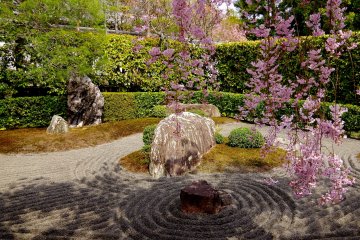
Kyoto Taizo-in Temple
Tomoko KamishimaKyoto Taizo-in Temple: Attractive inner temple of Myoshin-ji Temple Complex

Taizō-in is the oldest sub-temple of the Myōshin-ji Rinzai Zen Buddhist temple, situated in the northwest of Kyoto, Japan. It was founded by Zen priest Muinsoin in 1404. The original temple buildings were burned during the Ōnin War, and were later rebuilt. Taizō-in is well known for its two gardens. [Wikipedia]

Kyoto Taizo-in Temple: Attractive inner temple of Myoshin-ji Temple Complex
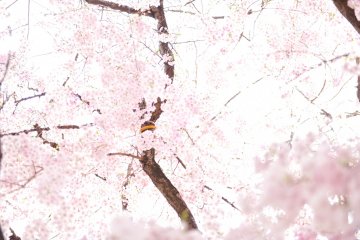
Taizo-in, one of the temples of Myoshinji Temple Complex in Kyoto, has a magnificent weeping cherry tree cascading over the Garden of Yin and Yang.
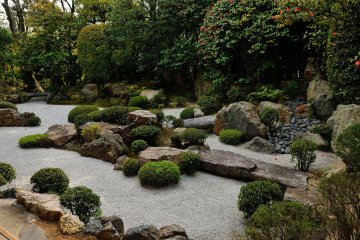
The Garden of Motonobu at Taizo-in Temple, of Myoshinji Temple Complex in Kyoto pursues 'Eternal Beauty'.
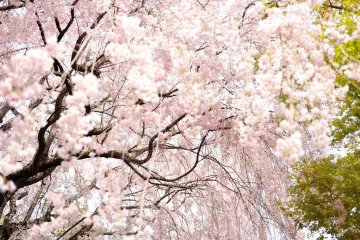
A magnificent view of the weeping cherry tree seen through the snow-viewing sliding screens of Daikyuan Teahouse at Taizo-in Temple, one of the temples of Myoshinji Temple Complex in Kyoto.
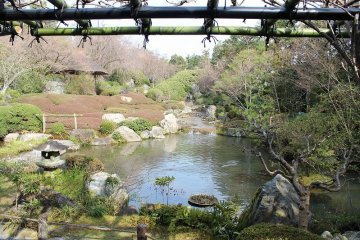
The Taizo-in Zen Garden at Myoshin Temple in Kyoto are known for their beautiful Yin and Yang rock gardens as well as their stunning cherry tree.
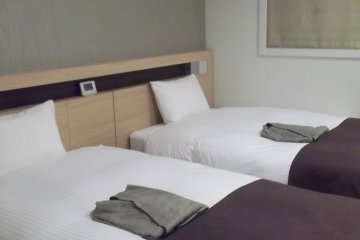
Close to Nijo Castle in Japan's most historic city, this stylish, modern hotel is comfortable, well located and supremely affordable.

A hidden gem, Ryokan Yamazaki is worth the 30 minute bus ride from central Kyoto. Tranquil surroundings, hearty food and family treatment will start & end your day right.

More like a chic home stay from an interior decoration magazine, this guesthouse is both elegant and comfortable.
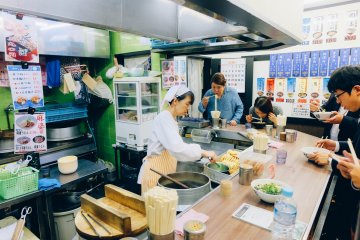
Miyako Soba is a small restaurant located in Saiinkozanjicho, just across by McDonald's near Saiin Station. It is well priced and located near Kawaramachi where people come and go day and night.

With the growing popularity of veganism, particularly in Japan, vegans can now enjoy ramen at both entirely vegan and vegan-friendly joints throughout the country. Here are three spots to check out in Kyoto.

ran Hotei is a Chaya or tea ceremony room in Central Kyoto The name ran Hotei is kind of play on words. Hotei is of course one the 'Shichifukujin' (Seven Lucky Gods) and 'ran' is not only a diminutive form of his name it also means shop in Thai. (Channell has spent a great deal of time in Thailand.) So if translated would mean Hotei's Shop! It is easy to miss amongst other shops in the Sanjokai Arcade, the longest of Kyoto’s traditional shopping streets. Once you found it though, and you step in, you enter a world of quiet nostalgia ideal for relaxing, reading a book or contemplating life.

Keishunin (桂春院) is one of the sub-temples of Myoshin-ji containing gardens and a teahouse.
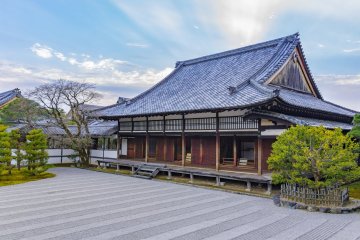
Ninna-ji Temple was founded in 888 and is a Buddhist temple in northeast Kyoto that is closely associated with the imperial family of Japan. It is the main temple of the Omuro school of the Shingon sect of Japanese Buddhism. There are many Omuro School temples throughout Japan and many priests from these temples come to Ninna-ji to attend Buddhist services and to study and train in the main temple of their sect. Ninna-ji Temple is known not only for the building itself, but also for its prime location as a viewpoint for the late cherry blossom. He also has a beautiful Japanese garden from which you can see the famous five-story pagoda. Behind Ninna-ji Temple is the Omuro Pilgrimage, a shorter version of the Shikoku pilgrimage. This route can be covered in about two hours on foot, but is believed to have the same meaning as the Shikoku pilgrimage.

Toei Kyoto Studio Park is a theme park and film set modeled after the Edo period located in Kyoto, Japan that opened its doors in 1975. It is situated in Toei Company's Kyoto Studio where movies have been produced. [Wikipedia]